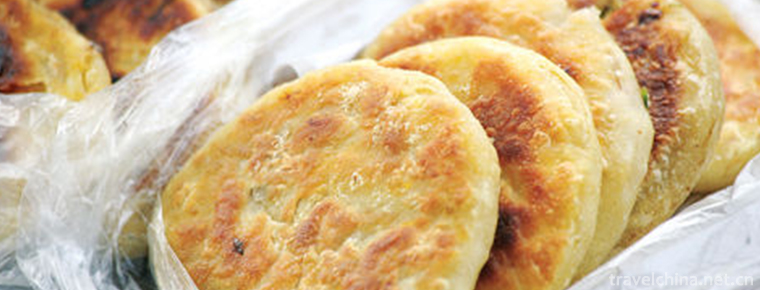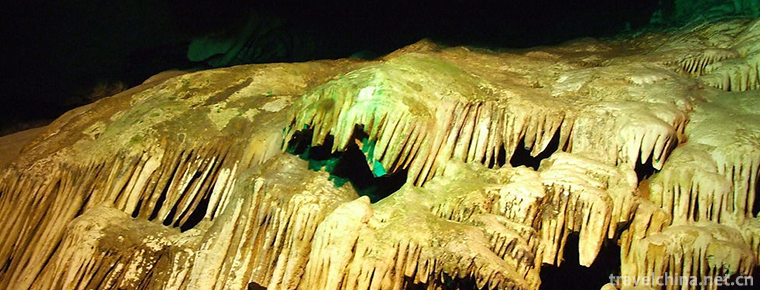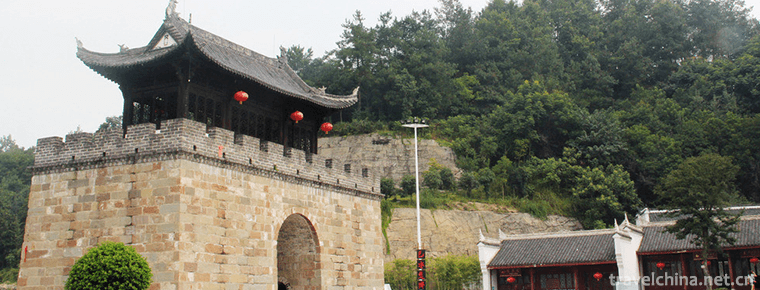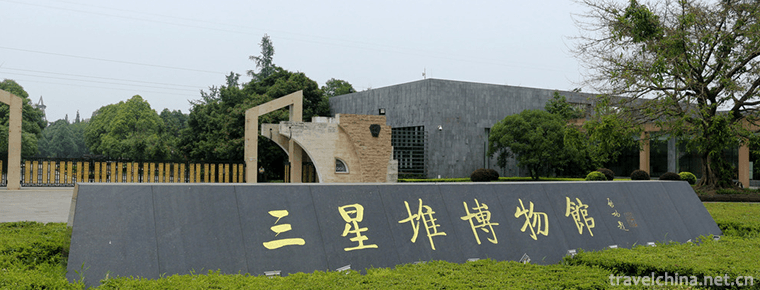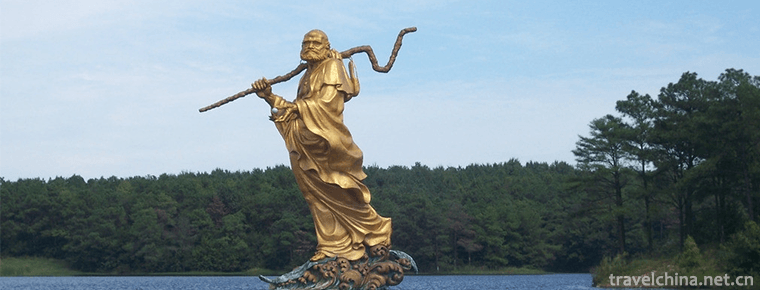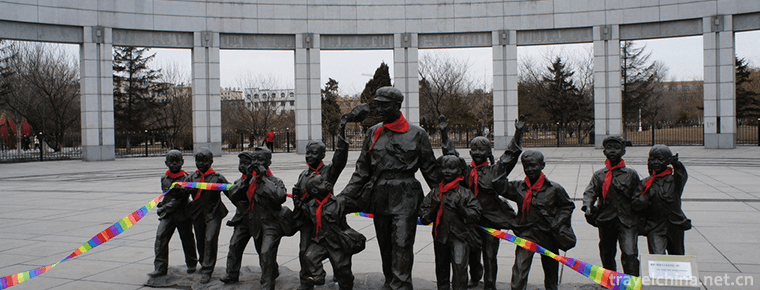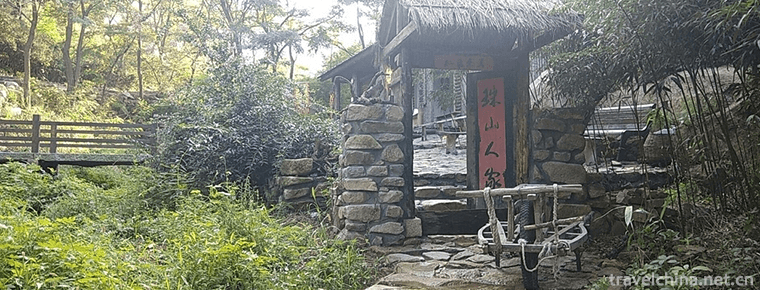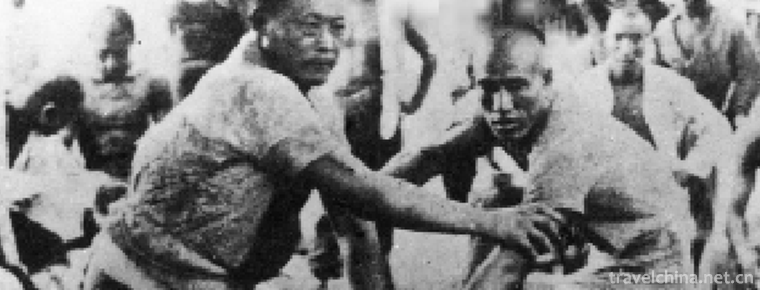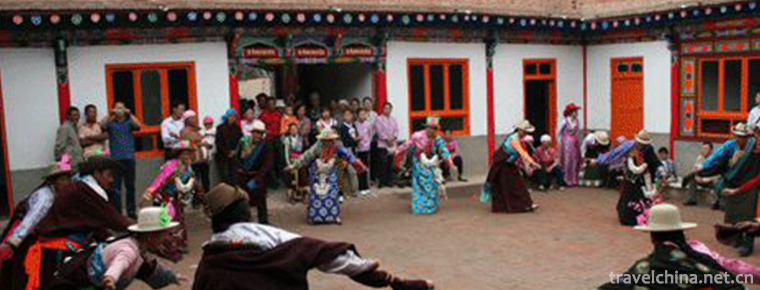Zhenfoshan Scenic Spot
Zhenfoshan Scenic Spot
Zhenfoshan Scenic Spot, National AAAA Class Tourist Scenic Spot, Provincial Scenic Spot and Provincial Key Cultural Relics Protection Unit are the "Three Religious Holy Places" integrating Buddhism, Confucianism and Taoism.
Zhenfoshan, originally known as "Guandi Temple", is located in the middle of Qilixia Mountains in Dachuan District, Dazhou City, Sichuan Province. It is located in Fushan Town, Dafeng Town, Dongxing Town, Daya Town and Jingshi Town of Dachuan District. After the fifteenth year of Jiaqing Qing Dynasty (1810), it was rebuilt as a temple. After the expansion of Daoguang in 1825, the temple was renamed "Zhenfoshan", and the whole temple went up in accordance with the mountain situation and divided into front and middle parts. The rear three halls, which are not connected with each other, are magnificent and magnificent. They are a famous Buddhist resort far and near. Every year, Mr. Jiang Foshan's birthday is the real Foshan fragrance festival. Tourists from all over the country go to play, which is very lively.
The scenic spot is mainly composed of Dehua Temple, Jade Buddha Temple, Diamond Temple, Lingyun Village and other humanistic landscapes, as well as natural landscapes such as Carmine Lake, Sanxianshi, Conch Cave, Lianhua Temple, Yunhua Mountain and Dao Jiliang. Ancient temples, stone pagodas, forests and seas, Xiufeng, karst caves and lakes are all in one. They are wonderful, dangerous, quiet and steep. It has a long historical and cultural background and simple and profound connotation of folk customs. The scene was inscribed by General Zhang Aiping, former Minister of Defense.
Development history
True Foshan is said to be the Buddha of Tathagata who was born as a filial son and named Jiang Dehua. Since childhood, he has taken filial piety and goodness as the foundation. He has cut his shares five times to heal the local people and then become a monk. He has built his own Buddhist temple and named it "Dehua Temple". Since then, he has become famous for thousands of miles and the incense fire has become more and more prosperous.
Beautiful and magical legends are the origin of the prosperity of Dehua Temple. Bodhisattvas rank in the main hall of Dehua Temple. Jiang Shanren lives in the center, and the Buddha of Tathagata bends to the left. This is unique among many Buddhist temples and temples in China. Jiang Shanren advocated "moralizing the masses, taking loyalty and filial piety as the foundation" and set up a single banner in Buddhism, so he claimed to be the reincarnation of the Tathagata. Jiang Shanren and Sakya "merge into one" naturally formed a doctrine of Buddhism doctrine and loyalty and filial piety.
There is an antithetical couplet in the Ten Kings'Palace of Zhenfoshan Temple: "The origin of loyalty and filial piety is the true Buddha, and this spiritual mountain is not old for all ages". The relationship between Buddhism and loyalty and filial piety is clearly described. Loyalty and filial piety are the moral norms advocated by Confucianism since ancient times, and they have been deeply rooted in people's hearts for a long time. Jiang Shanren avoided the mystery of Buddhism and combined the abstruse Buddhist philosophy with the traditional moral education of Buddhism into the word "loyalty and filial piety". Such dissemination of Buddhism, easy to understand, is undoubtedly the most acceptable to the masses, but also the most popular. Jiang Shanren, the embodiment of the Tathagata, advocated the word "loyalty and filial piety" and soon spread. Jiang Shanren's disciples named this theory of loyalty and filial piety as the core of Buddhist belief "Qingyun School" and incorporated it into Buddhist Zen. Thus, Zhenfoshan Temple publicizes loyalty and filial piety, and its fame runs smoothly. Some people who boast of loyalty and filial piety have come here to worship, write articles and inscribe couplets. Among them, Wu Peifu, the most well-known Beiyang Army, was defeated by the Kuomintang Revolutionary Army. After he was defeated by the Kuomintang Revolutionary Army, he came to Sichuan with dozens of people, including the Secretary-General, accompanied by Liu Cunhou, the then Sichuan-Shanxi Office of Defense Supervision, and paid a visit to Zhenfoshan.
True Foshan is famous for the so-called reincarnation of Jiang Shanren, Jiande Temple. Up to now, every year on June 19 of the lunar calendar, pilgrimage meetings are held, and people who worship Buddha and worship incense are involved. In front of the shrines, the incense offered by good men and women shines brightly and smoke lingers. In other places, the gods only burn paper. Only the "true Buddha" temple is allowed to set off firecrackers. Thus, the sounds of bells and pans, Buddha trumpets and firecrackers rose one after another, and the religious atmosphere was very strong.
Main attractions
The scenic spot mainly consists of Dehua Temple, Jade Buddha Temple, Diamond Temple, Lingyun Village and other humanistic landscapes, as well as natural landscapes such as Carmine Lake, Sanxianshi, Conch Cave, Lianhua Temple, Yunhua Mountain and Knife Ridge. The two towers of a Buddhist Temple opposite Dehua Temple are unique in shape, exquisite in craftsmanship and 21 stories high, which is the highest in the country. Ancient temples, stone pagodas, forests and seas, Xiufeng, karst caves and lakes are all in one. They have a long historical and cultural background and profound folk customs. Located in the middle of the Qilixia Mountains in Daxian County, Sichuan Province, Fushan Township, which was founded in Jiaqing in the Qing Dynasty in 1810, is a well-known Buddhist resort. It is listed as a key cultural relic protection unit of the province and a provincial scenic spot. In 2002, it was awarded the National AA Tourist Area. Its core scenic spot, Dehua Temple, covers an area of more than 400 mu and has a construction area of 15,000 square meters. According to county records, during the reign of Emperor Qianlong in Qing Dynasty (1785), farmers surnamed Jiang in Gaopingzhai, while practicing the minister's way and cultivating medicine, healed hundreds of people without pay, known as "Jiang Shanren", also known as "Jiang Living Buddha". Jiang Sui stood on the "Dehua Temple" in Gaopingzhai, where ordinary people flocked to the mountains to worship and raise funds to build the temple. When Suiding (now Dazhou) Zhifu Sun was childless after his marriage, he went to burn incense to seek his son. He was convinced that inspiration was holy. He praised it as "true Buddha". That is to say, he ordered Daxing Civil Engineering to expand the "Dehua Temple" into three halls, and personally wrote "true Buddha Mountain", so he got his name. Daxian Zhenfo Mountain is located in Fushan Township in the middle part of Qilixia Mountains, more than 30 kilometers south of Daxian City. It is 910 meters above sea level and covers an area of more than 3000 mu. It is a famous Buddhist resort far and near. According to county records, during the reign of Qianlong in the Qing Dynasty, Jiang Dehua, a peasant, practiced both Taoism and medicine. He was known as "Jiang Shanren" and "Jiang Living Buddha" and built "Dehua Temple" by himself. Sun Mou, the Zhifu of Hou Suiding Prefecture, went to seek his heir by chance, believed in his spirit, praised him as "the true Buddha", ordered the expansion of the temple, and personally inscribed "the true Buddha Mountain" at the temple gate, hence his name.
Zhenfoshan Mountain is steep, from the foot of the mountain to the gate, the pine and cypress are closely encircled, the eaves are warped, Zhuliang, there are thousands of steps straight up to the top of the mountain, like a half-empty cloud ladder, the two sides of the Cinnamomum camphor road, the more up the pine and cypress landscape is deeper. Zhenfoshan temple building is about 15,000 square meters, covering more than 400 mu. The whole temple takes the momentum according to the mountain. Several halls are scattered among the mountainside and the top of the hill. The ancient trees and cypresses around the temple embrace each other, the trees are green and green, the birds and insects are singing, which makes people feel that "all sounds are silent here, only the sound of bells" can be heard. The temple is composed of "Jade Emperor's Palace", "Tianzi Palace", "Diamond Palace" and "Daxiong Palace". In addition to temples, there are also Yunhua Mountain with green pine and vast sea of clouds. Jiang Shanren was born in "One Buddha Temple" and rose from the ground to the double stone pagodas, Lingyun Village of Bailian Uprising, and strange stalagmites of Carmine Lake. The whole scenic area integrates mountains, forests, waters, caves and temples. It is full of wonder, danger, seclusion and steepness. Zhenfoshan is a provincial scenic spot.
Fo Lu Street
Get off the bus at Fushan Country Farm, look up and see the beautiful peaks rising from the ground, and have deep thoughts. The green world like the sea suddenly unfolds in front of you. There are two ways to go up the hill to change back and walk across the field. This is a small place with dozens of families. In the past, it was called "Flu Street". The Lu of Tozhen Foshan served people who burned incense and worshiped incense, and also provided convenience for temple monks. Later, "Buddha" was changed to "blessing". It was said that "good is good, good is good, and good is good".
Fook Shan
Walking out of Fushan, passing through a narrow ridge, that is, to the foot of the mountain, from here on, into another world, the green forest sea. There are two rows of long camphor trees covering the stone ladder in the endless shade, climbing up the ladder, like step by step out of the mortal world, step by step close to fairyland, step by step, up to about 1,000 levels, on the right side of the mountain, there is a pavilion, cornices, elegant and exquisite. This Pavilion is famous as Longting Pavilion. When the ancestral Dehua Temple was built, there were many migrant workers and there was a shortage of water on the hill. One day a Taoist priest claimed to have the ability to dispatch water. He recited the secret and buckled a wine cup at the top of the ladder. He told the migrant workers not to move the cup for seven days before spring water could gush out. On the sixth day after the Taoist monk left, a migrant worker uncovered the cup. There was no water, but snails came to the murmuring sound of running water. On the seventh day, the Taoist priest came to the scene and saw that the cup had been opened. He said, "Dragon King of the East China Sea has started to deliver water. He has just come halfway. Because of your sincerity, he opened the cup early and returned in a fury." In order to show their sincerity, the migrant workers named the place Wanglongzui and built a Longting Pavilion to look at the dragon day and night. After hundreds of years, I don't know how many people come here to look at the dragon. Although they haven't seen the dragon, they have another interesting feeling. Look, the fields under the hill are in a continuous stream, the smoke is curling, and the pastoral scenery of Bashan can be seen at a glance.
Buddhist Resort
Located in the middle of Qilixia Mountains, Fushan Township, which was built in Jiaqing in the Qing Dynasty in 1810, is a well-known Buddhist resort. It is listed as a key cultural relic protection unit in the province and a provincial scenic spot. In 2002, it was awarded the National AA Tourist Area. Its core scenic spot, Dehua Temple, covers an area of more than 400 mu and has a building area of 15,000 square meters.
Jiang living Buddha
According to county records, during the reign of Emperor Qianlong in Qing Dynasty (1785), farmers surnamed Jiang in Gaopingzhai, while practicing the minister's way and cultivating medicine, healed hundreds of people without pay, known as "Jiang Shanren", also known as "Jiang Living Buddha". Jiang Sui stood on the "Dehua Temple" in Gaopingzhai, where ordinary people flocked to the mountains to worship and raise funds to build the temple. When Suiding (now Dazhou) Zhifu Sun was childless after his marriage, he went to burn incense to seek his son. He was convinced that inspiration was holy. He praised it as "true Buddha". That is to say, he ordered Daxing Civil Engineering to expand the "Dehua Temple" into three halls, and personally wrote "true Buddha Mountain", so he got his name.
True Foshan
Up the mountain from the gate of Zhenfoshan Scenic Spot, 118 stone steps stretch straight to the gate of the temple, like a hanging ladder hanging in half-space, 32 meters wide, with cinnamon, cypress and pines on both sides. The whole temple is situated on the hillside, with three palaces arranged in turn, scattered between the mountainside and the top of the mountain. There are stone ladders between the temples, ancient cypress embraced around the temple, green trees, birds and insects singing in the forest, which makes people feel "all sounds are silent here, only the sound of bells". There are six big stone pillars in the gate of the temple, which form the archway gate. On the middle of the gate, there are three gold letters inscribed with the words "Zhenfoshan", which are particularly striking. On the other hand, the words "Sheng" and "Jing" are inscribed on each side of the gate. Where to find Yaotai on Pengdao Island, only beautiful mountains and waters, long stay four beautiful scenery; this is the cave heaven and earth, see clouds and clouds dimly gushing out ten thousand lotus flowers. From the temple gate up, the order is the front hall, the middle hall and the back hall.
The front hall is the Jade Emperor Hall, with an area of about 2000 square meters. In the middle is the Jade Emperor, with four heavenly kings standing on both sides. Opposite the theatre building, the roof is semi-circular, playing an echo role; at the bottom of the stage beams decorated with seven groups of wooden carving images of theatre characters, in which the terraces, pavilions, height, distance, level, small and exquisite, characters with different shapes and features, clear pleat stripes, delicate and vivid, moving. The main hall doors and walls are all wood carvings, people, birds, animals, flowers, trees, everything.
Fifteen Hall
The central hall is the temple of the emperor, also known as the "fifteen halls", which is the Buddha's heart of True Foshan. Hengshu on the door of the palace is "the heaven and the earth are blessed in the cave", and there are couplets beside the door that "the heaven and earth are not old in this spiritual mountain, and the origin of loyalty and filial piety is the true Buddha". Embossed relief dragon and tiger statues are carved on the door of the palace. On the right wall, the word "Fu" is written one meter square. Those who come to burn incense and worship Buddha all step forward to feel "Fu" with blindfolded eyes. There are more than 300 statues in the hall. On the left and right sides of the hall, there are a group of peculiar tombs of monks'pagodas with a total of more than 100 tombs.
Just like Tianzhu
Out of the back door of the central hall, along the steep 100-step stone staircase, it is the highest rear hall in Zhenfo Mountain. In the middle of the palace gate, the four big characters "like nature and Zhu" are striking. The interior building of the rear hall consists of a large hall and two small halls, which are ingeniously conceived and have their own characteristics. There is a music building in the front hall and Guandi Pavilion in the back hall for the two gods of culture and martial arts. Between the small hall and the big hall, there are Zen houses on both sides. The roof of the hall is tilted eaves, and the birds and beasts of various forms rise above the hall, forming a unique architectural style of the hall with towers and towers in the hall. In the right hall outside the stone pagoda, there are three lotus thrones of Bodhisattvas. They are carved in sandalwood as four layers. In addition to carving various patterns, they are also decorated with "Tang monk drawing sutras" with exquisite patterns and exquisite craftsmanship.
The bell and Drum Tower attached to the Daxiong Palace is about 20 meters high and has four floors, each with its own characteristics. The big drum made in 1933 is 1.43 meters in diameter and placed on the third floor; the big iron bell cast in 1827, with a diameter of 1.47 meters, is placed on the fourth floor.
The three main halls and temple gates in Zhenfoshan are all hexahedral stone pillars with a width of 22-25 cm and a height of 8-14 M. They are all complete stone pillars without joints. According to statistics, there are 36 stone pillars in the temple. Sandian Architecture is the most complete and largest temple preserved in eastern Sichuan at present. Architectural art, architectural style and sculpture art in the temple are unique in eastern Sichuan, and it is an art treasure house. Among the temples in Quanchuan, it is also one of the most special temples of architectural art.
In addition to temples, there are also Yunhua Mountain with green pine and vast sea of clouds. Jiang Shanren was born in "One Buddha Temple" and rose from the ground to the double stone pagodas, Lingyun Village of Bailian Uprising, and strange stalagmites of Carmine Lake. The whole scenic area integrates mountains, forests, waters, caves and temples. It is full of wonder, danger, seclusion and steepness. Zhenfoshan is a provincial scenic spot.


-
Ancient town of Shaxi
Shaxi is located in the southeast of Jianchuan in Dali, Yunnan Province, China.
Views: 216 Time 2018-10-17 -
Huizhou cake
Huizhou cake, originally named "jujube mud crisp baked bread", is a traditional feature in Huizhou area, Anhui Province. .
Views: 223 Time 2018-11-27 -
Laojunshan Jiguandong Tourist Area
Jiguan Cave is located in Luanchuan County, Luoyang City, Henan Province, three kilometers west of the county seat. It is located on the half-hillside of Jiguan Mountain.
Views: 161 Time 2018-12-09 -
Quyuan Hometown Tourist Area
The cultural tourist area of Quyuan's hometown is located in Fenghuangshan, Zigui County, Yichang City, with a total area of 33.3 hectares in the north, Gaoxia Pinghu Lake in the north.
Views: 137 Time 2018-12-12 -
Sanxingdui Museum
The Sanxingdui Museum was founded in August 1992 and opened in October 1997. It is located in the northeast corner of Sanxingdui Site, a national key cultural relic protection unit. .
Views: 423 Time 2018-12-18 -
Daishan Lake
Daishan Lake is located in the ancient town of Feidong County, Hefei City, Anhui Province. Daishan Lake has a subtropical climate, warm and humid, with an average annual temperature of 15.7 degrees Ce.
Views: 217 Time 2019-01-08 -
Leifeng Memorial Hall in Fushun
The Leifeng Memorial Hall in Fushun City is located at No. 61, East Section of Peace Road, Wanghua District, Fushun City, Liaoning Province. It covers an area of 99900 square meters, near the army sta.
Views: 169 Time 2019-01-12 -
Zhushan National Forest Park
Zhushan National Forest Park is located in Liuhua Po Street Office in the west of Qingdao Development Zone. It is a national forest park approved by the State Forestry Administration in December 2000.
Views: 158 Time 2019-03-21 -
Construction Techniques of Hakka Tulou
Hakka Tulou building construction technology, Fujian Longyan City Nanjing County, Huaan County local traditional building construction technology, one of the national intangible cultural heritage..
Views: 139 Time 2019-05-09 -
Flyover wrestling
In the 1930s, when Peiping wrestling was very popular, Peiping wrestling was famous all over the country. At that time, the strongest wrestling master of Peiping overpass was Shen San (Shen Yousan), B.
Views: 373 Time 2019-06-21 -
Zerou
Zerou (Shangyu Zerou), also known as Ashze, is a Tibetan folk dance in Guide County, Qinghai Province. Especially "Shangyu (Chinese: lower row) is soft" is the most important. They often per.
Views: 440 Time 2019-07-16 -
Tongling University
Tongling University is a multi-disciplinary province. Undergraduate Regular institutions of higher learning It is the base for training and training talents of Finance and economics in Anhui province..
Views: 166 Time 2019-11-18

